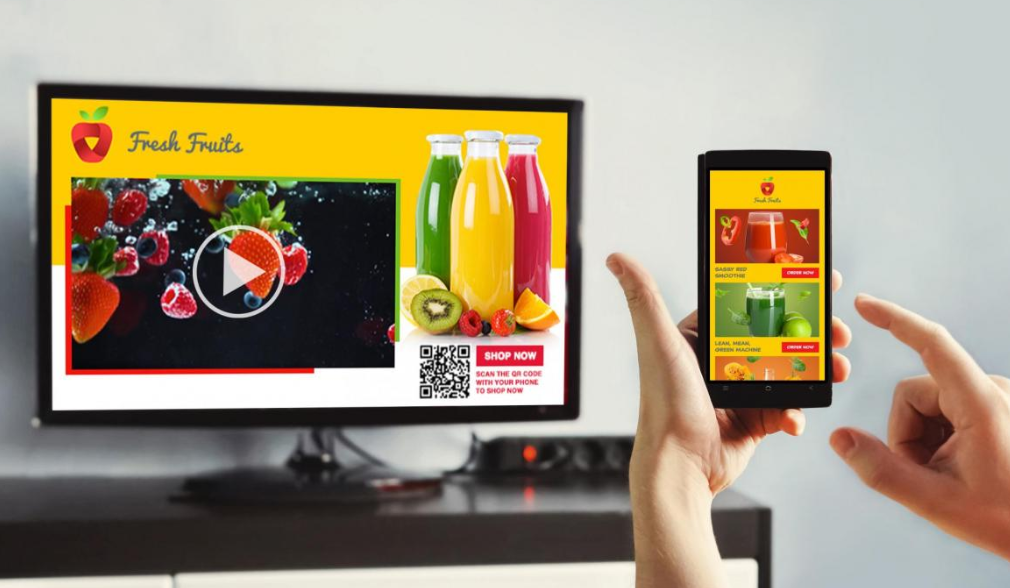Tech
What are the different formats of CTV Advertising?

The world is evolving really fast and advertising has given this ever-emerging world, the shape it deserves for future endeavors. Connected TV (CTV) advertising has emerged as a powerful and effective means for reaching target audiences in the comfort of their living rooms. With the rise in cord-cutting and the popularity of streaming services, CTV has become a go-to platform for advertisers to deliver their messages.
In this blog, we’ll explore the different formats of CTV advertising and delve into the essential role played by mobile marketing platforms in maximizing their potential.
Different Formats of CTV Advertising
(a) Pre-roll Ads: Pre-roll ads are short video ads that play before the selected content begins. These ads are non-skippable, ensuring that the viewers receive the intended message. They are commonly used for brand awareness and generating interest in a product or service.
(b) Mid-roll Ads: Mid-roll ads appear during the streaming of longer content, such as TV shows or movies. These ads are usually skippable after a specific duration, but they provide an opportunity for advertisers to engage the audience in a more extended format.
(c) Post-roll Ads: Post-roll ads are displayed at the end of the streaming content. They are ideal for delivering a strong call-to-action and driving conversions as viewers have already engaged with the content and may be more receptive to relevant offers.
(d) Interactive Ads: Interactive CTV ads allow viewers to engage with the content actively. These ads may include quizzes, surveys, or games, making the experience more enjoyable and memorable for the audience. By fostering interactivity, brands can build stronger connections with their target consumers.
(e) Display Ads: CTV platforms may also display traditional banners or display ads on their user interfaces. These static ads can drive traffic to a website or promote a specific product or offer.
(f) Branded Content and Sponsorships: Some CTV platforms offer the opportunity for brands to sponsor or create branded content. This approach allows advertisers to seamlessly integrate their message into the content, providing a more organic and non-intrusive advertising experience.
Now that a lot has been discussed about CTV, let’s talk further about how the results can be tracked further. Can utilizing a dedicated Tracking platform or a Mobile Marketing Platform, help anyway to take your business to the next level?
The Role of Mobile Marketing Platforms in CTV Advertising
Mobile marketing platforms play a pivotal role in enhancing the effectiveness and efficiency of CTV advertising campaigns by providing real-time analytics and insights, ensuring each advertising slot is optimized for maximum impact. Here’s how:
(a) Targeted Audience Reach: Mobile marketing platforms are equipped with advanced audience targeting capabilities. They gather data from various sources, such as mobile apps, websites, and user behavior, to create detailed user profiles. By leveraging this data, advertisers can precisely target their CTV ads to reach the right audience, ensuring that their message reaches the most relevant viewers.
(b) Cross-Device Synchronization: Mobile marketing platforms enable cross-device synchronization, which means advertisers can maintain consistent messaging across different devices, including smartphones, tablets, and CTVs. This ensures that the audience receives a cohesive brand experience, regardless of the screen they are using.
(c) Performance Tracking and Analytics: Mobile marketing platforms offer comprehensive performance tracking and analytics tools. Advertisers can monitor key metrics such as ad impressions, click-through rates, conversions, and engagement levels. These insights allow for real-time optimization, enabling advertisers to tweak their campaigns for better results.
(d) A/B Testing: A/B testing is an essential tool for optimizing CTV ads. Mobile marketing platforms facilitate running multiple versions of ads simultaneously to identify which one performs the best. This data-driven approach allows advertisers to fine-tune their creatives and deliver the most compelling messages to their audiences.
(e) Campaign Management: Mobile marketing platforms simplify the process of managing CTV advertising campaigns. Advertisers can set budgets, schedule ad placements, and control the frequency of their ads easily through a centralized dashboard.
(f) Retargeting and Remarketing: Mobile marketing platforms enable retargeting and remarketing strategies for CTV advertising. By re-engaging viewers who have interacted with previous ads or visited the advertiser’s website, brands can reinforce their message and improve conversion rates.
Conclusion
Connected TV advertising presents an exciting opportunity for brands to reach engaged audiences in a digital world dominated by streaming services. With various ad formats available, advertisers can choose the one that aligns best with their campaign objectives. Mobile marketing platforms play a critical role in maximizing the potential of CTV advertising by offering targeted audience reach, performance tracking, cross-device synchronization, and campaign management. As the digital advertising landscape continues to evolve, CTV advertising, coupled with mobile marketing strategies, will remain a force to be reckoned with in the marketing world.

-

 Business5 months ago
Business5 months agoSepatuindonesia.com | Best Online Store in Indonesia
-

 Technology3 weeks ago
Technology3 weeks agoTop High Paying Affiliate Programs
-

 Tech5 months ago
Tech5 months agoAutomating Your Window Treatments: The Advantages of Auto Blinds
-

 Tech5 months ago
Tech5 months agoUnleash Your Potential: How Mecha Headsets Improve Productivity and Focus
-

 Instagram2 years ago
Instagram2 years agoFree Instagram Follower Without Login
-

 Reviews11 months ago
Reviews11 months agoAndroid Laptop vs. Chromebook: Which one is better?
-

 Instagram2 years ago
Instagram2 years agoIGTOK – Get Instagram Followers, Likes & Comments
-

 Business8 months ago
Business8 months agoFollow These 5 Tips To Avail Personal Loans At Lower Interest Rates



















